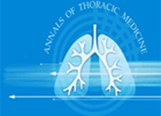Publications-19
|
Hypothyroidism and Obstructive Sleep Apnea
|
|
|
|
|
Clinical review: humidifiers during non-invasive ventilation--key topics and practical implications
|
|
|
|
|
Practice of Humidification During Noninvasive Mechanical Ventilation (NIV): Determinants of Humidification Strategies
|
|
|
|
|
The effect of one night of continuous positive airway pressure therapy on oxidative stress and antioxidant defense in hypertensive patients with severe obstructive sleep apnea
|
|
|
|
|
Comorbid insomnia in sleep-related breathing disorders: an under-recognized association
|
|
|
|
|
Metabolic, endocrine, and immune consequences of sleep deprivation
|
|
|
|
|
Melatonin Antioxidative Defense: Therapeutical Implications for Aging and Neurodegenerative Processes
|
|
|
|
|
Sleep architecture of consolidated and split sleep due to the dawn (Fajr) prayer among Muslims and its impact on daytime sleepiness
|
|
|
|
|
Sleep medicine: Present and future
|
|
|
|
|
Managing acute respiratory decompensation in the morbidly obese
|
|
|
|

 Hypothyroidism is relatively a common disease worldwide. Overall prevalence in adults in the United States is 4.6%. (Golden et al., 2009) It can present as mild/subclinical form or overt hypothyroidism with a prevalence of 4.3% and 0.3% of adult populations, respectively....
Hypothyroidism is relatively a common disease worldwide. Overall prevalence in adults in the United States is 4.6%. (Golden et al., 2009) It can present as mild/subclinical form or overt hypothyroidism with a prevalence of 4.3% and 0.3% of adult populations, respectively....
 Inadequate gas conditioning during non-invasive ventilation (NIV) can impair the anatomy and function of nasal mucosa. The resulting symptoms may have a negative effect on patients' adherence to ventilatory treatment, especially for chronic use...
Inadequate gas conditioning during non-invasive ventilation (NIV) can impair the anatomy and function of nasal mucosa. The resulting symptoms may have a negative effect on patients' adherence to ventilatory treatment, especially for chronic use... Noninvasive ventilation (NIV) has become a standard practice in the hospital and at home for several acute and chronic respiratory diseases. While the routine use of humidification in invasive ventilation has become a standard of care, there is no consensus or standard approach to guide the use of humidification in NIV...
Noninvasive ventilation (NIV) has become a standard practice in the hospital and at home for several acute and chronic respiratory diseases. While the routine use of humidification in invasive ventilation has become a standard of care, there is no consensus or standard approach to guide the use of humidification in NIV... Background: Muslims are required to wake up early to pray (Fajr) at dawn (approximately one and one-half hours before sunrise). Some Muslims wake up to pray Fajr and then sleep until it is time to work (split sleep), whereas others sleep continuously (consolidated sleep) until work time and pray Fajr upon awakening...
Background: Muslims are required to wake up early to pray (Fajr) at dawn (approximately one and one-half hours before sunrise). Some Muslims wake up to pray Fajr and then sleep until it is time to work (split sleep), whereas others sleep continuously (consolidated sleep) until work time and pray Fajr upon awakening...


